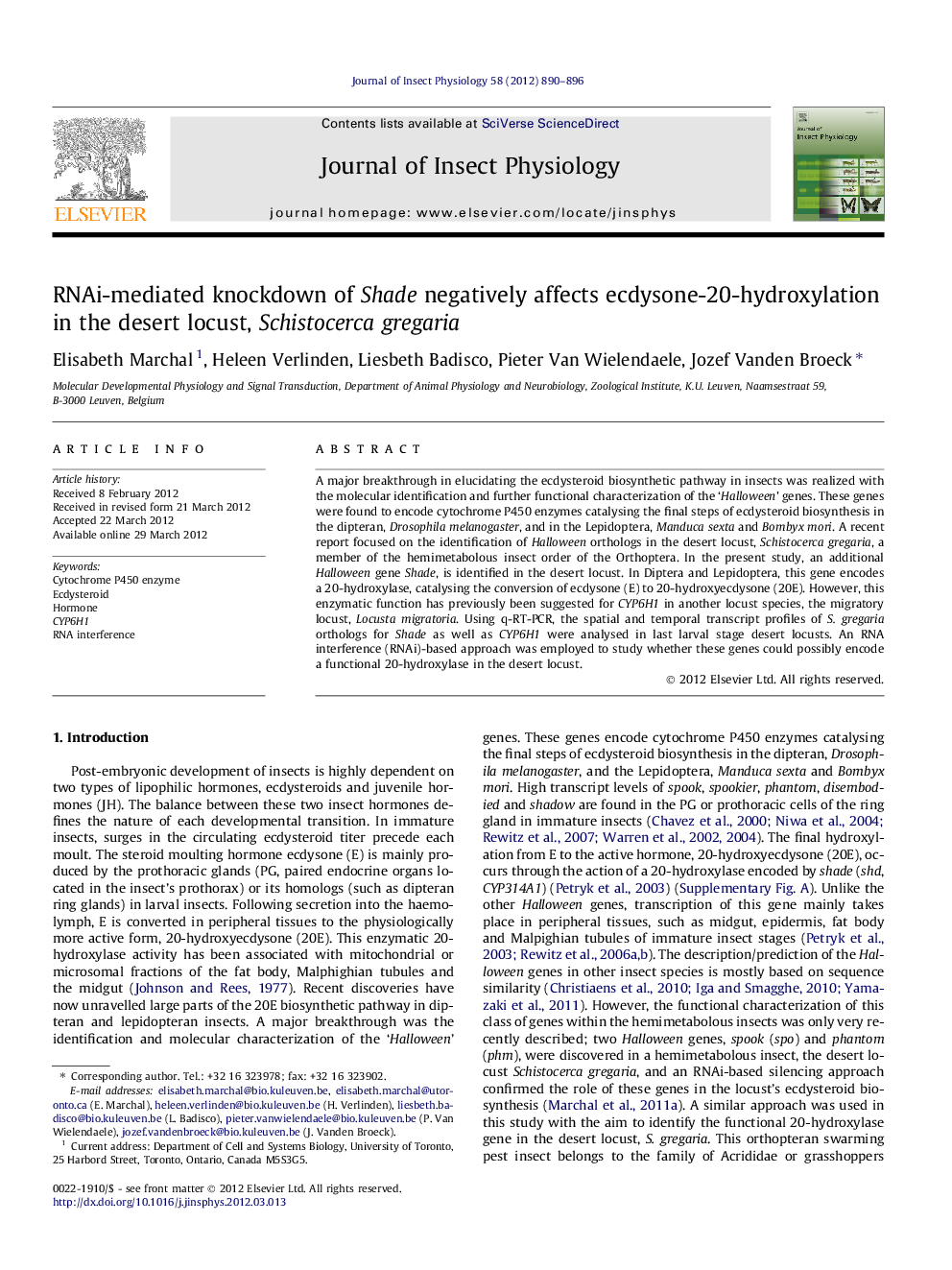| کد مقاله | کد نشریه | سال انتشار | مقاله انگلیسی | نسخه تمام متن |
|---|---|---|---|---|
| 2840526 | 1165330 | 2012 | 7 صفحه PDF | دانلود رایگان |

A major breakthrough in elucidating the ecdysteroid biosynthetic pathway in insects was realized with the molecular identification and further functional characterization of the ‘Halloween’ genes. These genes were found to encode cytochrome P450 enzymes catalysing the final steps of ecdysteroid biosynthesis in the dipteran, Drosophila melanogaster, and in the Lepidoptera, Manduca sexta and Bombyx mori. A recent report focused on the identification of Halloween orthologs in the desert locust, Schistocerca gregaria, a member of the hemimetabolous insect order of the Orthoptera. In the present study, an additional Halloween gene Shade, is identified in the desert locust. In Diptera and Lepidoptera, this gene encodes a 20-hydroxylase, catalysing the conversion of ecdysone (E) to 20-hydroxyecdysone (20E). However, this enzymatic function has previously been suggested for CYP6H1 in another locust species, the migratory locust, Locusta migratoria. Using q-RT-PCR, the spatial and temporal transcript profiles of S. gregaria orthologs for Shade as well as CYP6H1 were analysed in last larval stage desert locusts. An RNA interference (RNAi)-based approach was employed to study whether these genes could possibly encode a functional 20-hydroxylase in the desert locust.
Figure optionsDownload as PowerPoint slideHighlights
► Shade (Shd) and CYP6H1 previously reported as 20-hydroxylases.
► Partial orthologs were cloned in the desert locust, Schistocerca gregaria.
► Fifth larval tissue distribution and developmental expression performed with q-RT-PCR.
► RNAi experiment verifies orthologous function of SgShd.
Journal: Journal of Insect Physiology - Volume 58, Issue 7, July 2012, Pages 890–896